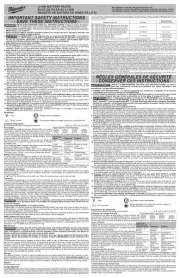Milwaukee M18 Fuel 2822-22 Handleiding
Bekijk gratis de handleiding van Milwaukee M18 Fuel 2822-22 (11 pagina’s), behorend tot de categorie Accu. Deze gids werd als nuttig beoordeeld door 54 mensen en kreeg gemiddeld 4.7 sterren uit 27.5 reviews. Heb je een vraag over Milwaukee M18 Fuel 2822-22 of wil je andere gebruikers van dit product iets vragen? Stel een vraag
Pagina 1/11

Cat. No. / No de cat.
2822-20
M18 FUEL™ SAWZALL®
RECIPROCATING SAW WITH ONE-KEY™
SCIE ALTERNATIVE ONE-KEY™ SAWZALL ® FUEL M18™
SIERRA RECIPROCA M18 FUEL™ ONE-KEY™ SAWZALL®
OPERATOR'S MANUAL
MANUEL de L'UTILISATEUR
MANUAL del OPERADOR
WARNING To reduce the risk of injury, user must read and understand operator's manual.
AVERTISSEMENT Afi n de réduire le risque de blessures, l'utilisateur doit lire et bien
comprendre le manuel.
ADVERTENCIA Para reducir el riesgo de lesiones, el usuario debe leer y entender el manual.
WARNING To reduce the risk of injury, user must read and understand operator's manual.
AVERTISSEMENT Afi n de réduire le risque de blessures, l'utilisateur doit lire et bien
comprendre le manuel.
ADVERTENCIA Para reducir el riesgo de lesiones, el usuario debe leer y entender el manual.

23
GENERAL POWER TOOL
SAFETY WARNINGS
WARNING
Read all safety warnings, instruc-
tions, illustrations and specifi ca-
tions provided with this power tool. Failure to
follow all instructions listed below may result in
electric shock, fi re and/or serious injury. Save all
warnings and instructions for future reference.
The term "power tool" in the warnings refers to your
mains-operated (corded) power tool or battery-oper-
ated (cordless) power tool.
WORK AREA SAFETY
• Keep work area clean and well lit. Cluttered or
dark areas invite accidents.
• Do not operate power tools in explosive atmo-
spheres, such as in the presence of fl ammable
liquids, gases or dust. Power tools create sparks
which may ignite the dust or fumes.
• Keep children and bystanders away while operating
a power tool. Distractions can cause you to lose control.
ELECTRICAL SAFETY
• Power tool plugs must match the outlet. Never
modify the plug in any way. Do not use any
adapter plugs with earthed (grounded) power
tools. Unmodifi ed plugs and matching outlets will
reduce risk of electric shock.
• Avoid body contact with earthed or grounded
surfaces, such as pipes, radiators, ranges and
refrigerators. There is an increased risk of electric
shock if your body is earthed or grounded.
• Do not expose power tools to rain or wet condi-
tions. Water entering a power tool will increase the
risk of electric shock.
• Do not abuse the cord. Never use the cord for
carrying, pulling or unplugging the power tool.
Keep cord away from heat, oil, sharp edges or
moving parts. Damaged or entangled cords increase
the risk of electric shock.
• When operating a power tool outdoors, use an
extension cord suitable for outdoor use. Use of
a cord suitable for outdoor use reduces the risk of
electric shock.
• If operating a power tool in a damp location is
unavoidable, use a ground fault circuit interrupter
(GFCI) protected supply. Use of an GFCI reduces
the risk of electric shock.
PERSONAL SAFETY
• Stay alert, watch what you are doing and use
common sense when operating a power tool. Do
not use a power tool while you are tired or under
the infl
uence of drugs, alcohol or medication.
A
moment of inattention while operating power tools
may result in serious personal injury.
• Use personal protective equipment. Always
wear eye protection. Protective equipment such
as a dust mask, non-skid safety shoes, hard hat or
hearing protection used for appropriate conditions
will reduce personal injuries.
• Prevent unintentional starting. Ensure the switch
is in the off -position before connecting to power
source and/or battery pack, picking up or carrying
the tool. Carrying power tools with your fi nger on
the switch or energizing power tools that have the
switch on invites accidents.
• Remove any adjusting key or wrench before
turning the power tool on. A wrench or a key left
attached to a rotating part of the power tool may
result in personal injury.
• Do not overreach. Keep proper footing and
balance at all times. This enables better control
of the power tool in unexpected situations.
• Dress properly. Do not wear loose clothing or
jewelry. Keep your hair and clothing away from
moving parts. Loose clothes, jewelry or long hair
can be caught in moving parts.
• If devices are provided for the connection of
dust extraction and collection facilities, ensure
these are connected and properly used. Use of
dust collection can reduce dust-related hazards.
• Do not let familiarity gained from frequent use
of tools allow you to become complacent and
ignore tool safety principles. A careless action can
cause severe injury within a fraction of a second.
POWER TOOL USE AND CARE
• Do not force the power tool. Use the correct power
tool for your application. The correct power tool
will do the job better and safer at the rate for which
it was designed.
• Do not use the power tool if the switch does not
turn it on and off . Any power tool that cannot be
controlled with the switch is dangerous and must be
repaired.
• Disconnect the plug from the power source and/
or remove the battery pack, if detachable, from
the power tool before making any adjustments,
changing accessories, or storing power tools.
Such preventive safety measures reduce the risk of
starting the power tool accidentally.
• Store idle power tools out of the reach of children
and do not allow persons unfamiliar with the
power tool or these instructions to operate the
power tool. Power tools are dangerous in the hands
of untrained users.
• Maintain power tools and accessories. Check
for misalignment or binding of moving parts,
breakage of parts and any other condition that
may aff ect the power tool’s operation. If damaged,
have the power tool repaired before use. Many ac-
cidents are caused by poorly maintained power tools.
• Keep cutting tools sharp and clean. Properly
maintained cutting tools with sharp cutting edges
are less likely to bind and are easier to control.
• Use the power tool, accessories and tool bits
etc. in accordance with these instructions,
taking into account the working conditions and
the work to be performed. Use of the power tool
for operations diff erent from those intended could
result in a hazardous situation.
• Keep handles and grasping surfaces dry, clean
and free from oil and grease. Slippery handles and
grasping surfaces do not allow for safe handling and
control of the tool in unexpected situations.
BATTERY TOOL USE AND CARE
• Recharge only with the charger specifi ed by the
manufacturer. A charger that is suitable for one type
of battery pack may create a risk of fi re when used
with another battery pack.
•
Use power tools only with speci
fi cally designated
battery packs. Use of any other battery packs may
create a risk of injury and fi re.
• When battery pack is not in use, keep it away
from other metal objects, like paper clips, coins,
keys, nails, screws or other small metal objects,
that can make a connection from one terminal
to another. Shorting the battery terminals together
may cause burns or a fi re.
• Under abusive conditions, liquid may be ejected
from the battery; avoid contact. If contact ac-
cidentally occurs, flush with water. If liquid
contacts eyes, additionally seek medical help.
Liquid ejected from the battery may cause irritation
or burns.
• Do not use a battery pack or tool that is dam-
aged or modifi ed. Damaged or modifi ed batteries
may exhibit unpredictable behavior resulting in fi re,
explosion or risk of injury.
• Do not expose a battery pack or tool to fi re or
excessive temperature. Exposure to fi re or tem-
perature above 265°F (130°C) may cause explosion.
• Follow all charging instructions and do not charge
the battery pack or tool outside the temperature
range specifi
ed in the instructions.
Charging im-
properly or at temperatures outside the specifi ed range
may damage the battery and increase the risk of fi re.
SERVICE
• Have your power tool serviced by a qualifi ed
repair person using only identical replacement
parts. This will ensure that the safety of the power
tool is maintained.
• Never service damaged battery packs. Service
of battery packs should only be performed by the
manufacturer or authorized service providers.
SPECIFIC SAFETY RULES FOR
SAWZALL® RECIPROCATING SAW
• Hold the power tool by insulated gripping sur-
faces, when performing an operation where the
cutting accessory may contact hidden wiring.
Cutting accessory contacting a “live” wire may make
exposed metal parts of the power tool “live” and
could give the operator an electric shock.
• Use clamps or another practical way to secure
and support the workpiece to a stable platform.
Holding the work by hand or against your body
leaves it unstable and may lead to loss of control.
• Chemical Burn Hazard. Keep coin cell battery
away from children.
•
WARNING
To reduce the risk of injury, when
working in dusty situations, wear
appropriate respiratory protection or use an
OSHA compliant dust extraction solution.
• Always use common sense and be cautious when
using tools. It is not possible to anticipate every
situation that could result in a dangerous outcome.
Do not use this tool if you do not understand these
operating instructions or you feel the work is beyond
your capability; contact Milwaukee Tool or a trained
professional for additional information or training.
• Maintain labels and nameplates. These carry
important information. If unreadable or missing,
contact a MILWAUKEE service facility for a free
replacement.
•
WARNING
Some dust created by power sanding,
sawing, grinding, drilling, and other
construction activities contains chemicals known to
cause cancer, birth defects or other reproductive
harm. Some examples of these chemicals are:
• lead from lead-based paint
• crystalline silica from bricks and cement and other
masonry products, and
• arsenic and chromium from chemically-treated
lumber.
Your risk from these exposures varies, depending on
how often you do this type of work. To reduce your
exposure to these chemicals: work in a well ventilated
area, and work with approved safety equipment, such
as those dust masks that are specially designed to
fi lter out microscopic particles.
SYMBOLOGY
Volts
Direct Current
No Load Strokes per Minute (SPM)
CUS UL Listing for Canada and U.S.
SPECIFICATIONS
Cat. No. ..................................................... 2822-20
Volts.............................................................. 18 DC
Battery Type .................................................M18™
Charger Type................................................ M18™
No Load Strokes per Minute ...................... 0 - 3000
Length of Stroke ............................................ 1-1/4"
Module/FCC ID ............................ BGM11S/QOQ11
Recommended Ambient
Operating Temperature ......................0°F to 125°F
FUNCTIONAL DESCRIPTION
1. Shoe
2. Quik-Lok® blade clamp
3. LED
4. Quik-Lok® blade clamp
release lever
5. Insulating boot
6. Hang hook (not shown)
7. Trigger
8. Trigger lock
9. Handle
10. Mode indicator
11. Shoe release
buttons
1
3 4 5 8
11
9
7
6
2
10

45
Removing broken blades from the
Quik-Lok® Blade Clamp
Broken blades can be removed by the following
methods.
• Remove battery pack before removing blades.
• Point the tool downward, slide up and hold the
release lever, and shake the tool up and down (Do
not turn the tool on while holding the blade clamp
open). The shank of the broken blade should drop
out of the clamp.
• If shaking the tool doesn't work...
In most cases, a corner of the broken blade will
extend beyond the blade clamp. Slide up and hold
the release lever, and pull the broken blade out of
the clamp by this corner.
• If the broken stub doesn't extend far enough to be
grabbed by its corner, use a thin blade with small
teeth (such as a metal cutting blade) to hook the
blade that is jammed in the clamp while holding up
the release lever, and pull it out.
WARNING
To reduce the risk of injury, blades
must extend beyond the shoe and
workpiece throughout the stroke. Blades may
shatter if they impact the workpiece or shoe.
Stroke
Stroke
Adjusting the Pivot Shoe
The shoe can be adjusted
forward or backward to eight
positions to take advantage
of the unused portion of the
blade or for special jobs
requiring low blade clear-
ance.
1. To adjust the shoe, press
the shoe release but-
tons simultaneously and
slide the shoe forward or
backward to the desired
position. Tug on shoe to
make sure it is securely
locked in place.
2. After adjusting the shoe,
slowly pull the trigger to
be sure the blade always extends beyond the shoe
and the workpiece throughout the stroke.
DO NOT OPERATE SAWZALL®
RECIPROCATING
SAW WITHOUT SHOE. STRIKING THE SPINDLE
AGAINST WORKPIECE MAY DAMAGE THE TOOL.
ONE-KEY™
To learn more about the ONE-KEY™ functionality for
this tool, please refer to the quick reference included with
this product or go to milwaukeetool.com/One-Key. To
download the ONE-KEY™ app, visit the App Store or
Google Play from your smart device.
ONE-KEY™ Indicator
Solid Blue Wireless mode is active and ready
to be confi gured via the ONE-KEY™
app.
Blinking Blue Tool is actively communicating with
the ONE-KEY™ app.
Blinking Red Tool is in security lockout and can
be unlocked by the owner via the
ONE-KEY™ app.
OPERATION
WARNING
To reduce the risk of injury, always
wear proper eye protection marked
to comply with ANSI Z87.1.
When working in dusty situations, wear appro-
priate respiratory protection or use an OSHA
compliant dust extraction solution.
Always remove battery pack before changing
or removing accessories. Only use accessories
specifi cally recommended for this tool. Others
may be hazardous.
Trigger Lock
To lock the trigger, push the trigger lock to the right.
The trigger will not work while the switch is in the
locked position. Always lock the trigger and remove
the battery pack before performing maintenance and
changing accessories. Lock the trigger when storing
the tool and when the tool is not in use.
To unlock the trigger, push the trigger lock to
the left.
ASSEMBLY
WARNING
Recharge only with the charger
specifi ed for the battery. For spe-
cifi c charging instructions, read the operator’s
manual supplied with your charger and battery.
Removing/Inserting the Battery
To remove the battery, push in the release buttons
and pull the battery pack away from the tool.
WARNING
Always remove battery pack before
changing or removing accessories.
To insert the battery, slide the pack into the body
of the tool. Make sure it latches securely into place.
WARNING
Only use accessories specifi cally
recommended for this tool. Others
may be hazardous.
Selecting a Blade
The Quik-Lok®
Blade Clamp can be used with all 1/2"
shank universal Sawzall
® reciprocating saw blades.
Use MILWAUKEE High Performance Super Sawzall
®
reciprocating saw blades for best performance. When
selecting a blade, choose the right type and length.
Many types of blades are available for a variety of
applications: cutting metal, wood, nail-embedded
wood, scroll cutting, roughing-in, and contours.
Many lengths are also available. Choose a length
long enough to extend beyond the shoe and the work
throughout the stroke. Do not use blades less than
4" long since they won't extend beyond the shoe
throughout the stroke.
Installing and Removing Blades from the
Quik-Lok® Blade Clamp
Remove battery pack before changing blades. Make
sure the spindle and blade clamp areas are clean.
Metal chips and sawdust may prevent the Quik-Lok
®
Blade Clamp from clamping securely.
1. Remove battery pack.
2. Depending on the job, the blade may be inserted
with the teeth facing up or down. To install a blade,
insert the blade into the clamp until the tang butts
against the collar.
3. The spring loaded mechanism will clamp the blade
fi rmly in place.
4. Tug on blade to make sure it is securely locked
in place.
5. To remove a blade,slide the release lever up
and pull the blade from the tool. Be careful when
handling hot blades.
Quik-Lok®
Blade Clamp Maintenance
WARNING
To reduce the risk of injury, always
wear proper eye protection marked
to comply with ANSI Z87.1.
When working in dusty situations, wear appro-
priate respiratory protection or use an OSHA
compliant dust extraction solution.
• Periodically clean dust and debris from the
Quik-Lok® Blade Clamp with dry compressed air.
• If the collar resists, slide the release lever back and
forth to shake debris loose.
• Periodically lubricate Quik-Lok
® Blade Clamp with
a dry lubricant such as graphite according to the
manufacturer's instructions.
Cut Brake Control
WARNING
To reduce the risk of electric shock,
check work area for hidden pipes
and wires before cutting. Generally, the saw
blade stops quickly, but there may be a slight
delay between the time the cut brake activates
and when the blade stops. Always wait for the
blade to stop completely before removing the
saw from the workpiece and try to avoid contact
with sensitive materials.
The Cut Brake detects the load on the tool and stops
the blade automatically at the end of a cut. This can
help avoid cutting sensitive materials near the work-
piece and when working in tight spaces.
When enabled, the Cut Brake Indicator will light solid
green. If the Cut Brake activates during a cut, the
tool will shut off and the indicator will blink green. T
o
reset, release the trigger.
The Cut Brake may not engage properly when:
• There is excessive vibration during a cut. This can
occur when the workpiece is not secured properly,
which can cause the cut brake to activate early.
• Pressure on the tool is varied during the cut, which
can cause the cut brake to activate early. Keep an
even, consistent pressure throughout the cut.
• The trigger is not fully engaged or the tool has not
ramped up to full speed. The tool must be running
at max speed of the selected mode to engage the
cut brake.
• Cutting light materials, such as drywall. If the ma-
terials are too thin or light, the tool may not detect
a load on the blade and may not shut off when the
end of the cut is reached.
• Cutting thin materials, such as 1/2" PVC pipe. If
the cut time is too short, the tool will not ramp up to
full speed and will not shut off when the end of the
cut is reached.
Selecting Mode
Allow the tool to come to a complete stop before
changing modes. Press the selector button to cycle
between the modes. Select the
ONE-KEY™
indicator
to change the default settings via the ONE-KEY
App on your smart device.
Cut Brake
Indicator Modes
1, 2, 3 ONE-KEY™
Indicator
The default settings are shown below and can be
changed via the ONE-KEY App on your smart device.
Default Modes
Mode 1 Mode 2 Mode 3
Max Speed
(SPM) 1300 2300 3000
Cut Brake Off Off Off
Trigger
Ramp-up Time* 1 sec. 0.1 sec. 0.1 sec.
*Trigger Ramp Up is the amount of time it takes for
the tool to reach Max Speed. This is benefi cial for
cutting through dense materials by allowing the
blade to bite into the material before increasing in
speed, helping make the cut smoother.
Product specificaties
| Merk: | Milwaukee |
| Categorie: | Accu |
| Model: | M18 Fuel 2822-22 |
Heb je hulp nodig?
Als je hulp nodig hebt met Milwaukee M18 Fuel 2822-22 stel dan hieronder een vraag en andere gebruikers zullen je antwoorden
Handleiding Accu Milwaukee
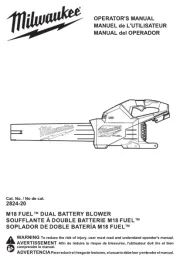
14 Juli 2025

2 December 2024

2 December 2024

2 December 2024
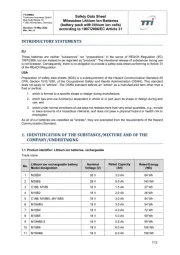
2 December 2024

2 December 2024

2 December 2024

2 December 2024

2 December 2024
Handleiding Accu
- Ranex
- Black And Decker
- Kress
- Duracell
- PNY
- Sandberg
- Ozito
- Worx
- Cramer
- Hilti
- Ergotron
- Cocraft
- Belkin
- Energizer
- Epson
Nieuwste handleidingen voor Accu
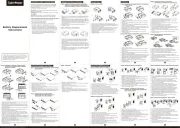
28 Juli 2025
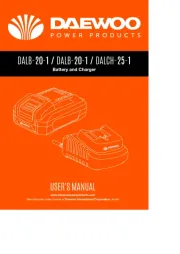
15 Juli 2025
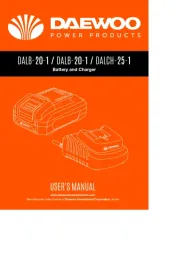
5 Juli 2025
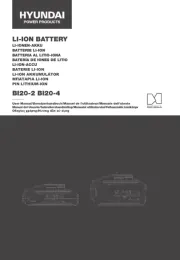
1 Juli 2025
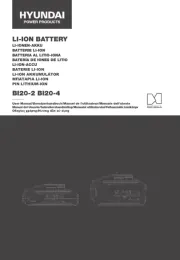
30 Juni 2025
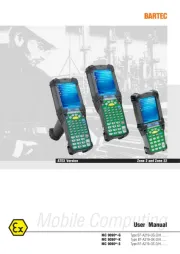
20 Juni 2025
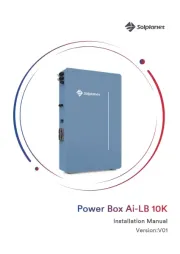
11 Juni 2025
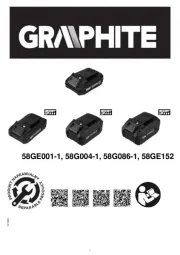
10 Juni 2025
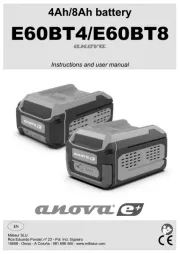
24 Mei 2025
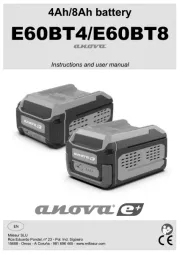
24 Mei 2025
